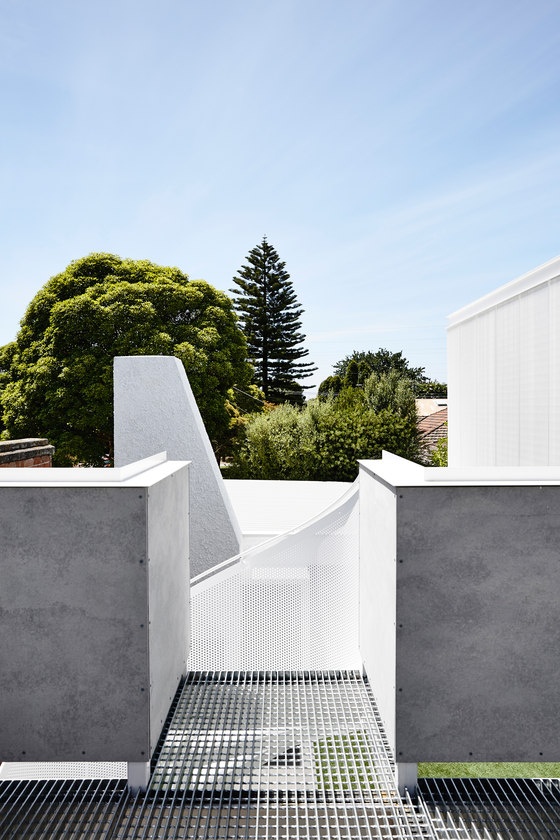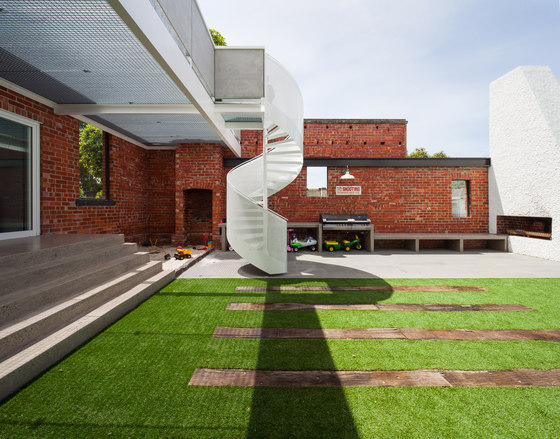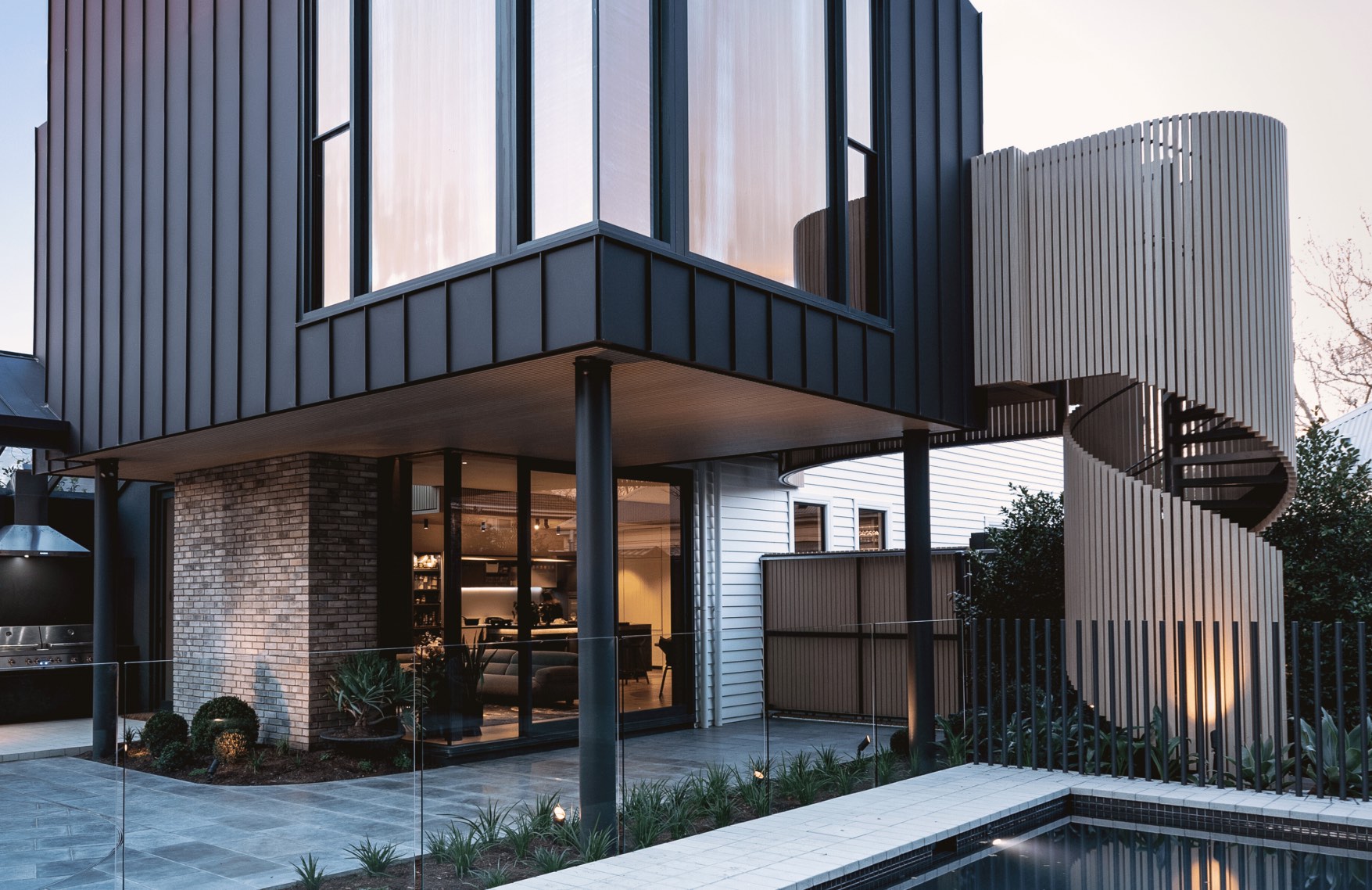
Project: Kazoo House: Melbourne
Universal 1500/14
Kazoo House represents a modification and extension of an existing Edwardian house from the 1900s, featuring a red brick façade and an original weatherboard stable situated at the rear. Positioned directly across from Caulfield’s esteemed turf, the residence earned its moniker “Kazoo” in honor of the racehorse whose winnings played a pivotal role in financing its construction. The front of the original house has been meticulously restored to house three bedrooms and a living room. The novel addition boasts a checkered floor plan, comprised of two distinct structures separated by diagonally positioned voids to the north and east.

Within the new addition, the lower floor accommodates an open-plan kitchen and dining area, while the upper floor houses the master suite. The upper floor is adorned with a visible steel grate skin, reminiscent of the materials used in the nearby racecourse watchtowers. Serving both as a striking contrast to the existing red bricks and providing essential shading, the steel grate also acts as privacy screening from neighboring structures. This same material is employed horizontally to create the floor of the viewing deck, enabling light to filter through to the undercroft and the living room below.


Preserving the existing house’s street-facing boundary wall, stripped of its paint to reveal the original red brickwork, it forms the outer edge of the north-facing courtyard. This courtyard, accessible from the kitchen and dining area, serves as a central hub for the activities of the young family residing in the house. Every element within this space is carefully designed to meet social needs, from the generous concrete steps doubling as informal seating to the strategically positioned outdoor kitchen bench.
Much of the exterior elements are painted in white, enhancing the reflective quality of the color and accentuating the interplay between light and shadow, solidity and void. These features, expressed individually as basic forms like a spiral, trapezoid prism, square, rectangle, ziggurat steps, and planes, collectively resemble building blocks in a Russian Constructivist painting. They convey the dynamic nature of the space and the voids in between.












